October 4, 2013
In order to get going, we must first prime our kitchen. Let me start by saying that for those with some sort of health issues and concerns, supplemental dietary items may be necessary and a blessing for those who want to eat a variety of foods. I don’t mean to dismiss gluten-free alternatives and all the various sugar substitutes in existence. But for the basis of evening the playing field, we’ll assume that those reading this just want to clean up their diet and eliminate the processed crap, like me. Sound good? With that being said, I’ve spent way too much money on odd ingredients for random recipes in Gwyneth’s book, which I doubt I will be getting much use out of. I am now in possession of 9 different types of flour, but only seem to cook and bake with 2-3, and I own brown rice syrup, of which I’ve only used 1/4 cup. I’m going to limit the following list to fresh, basic, and natural ingredients as much as possible.
In the Pantry
Oils & Vinegars – you’ll want to stock up on some good good quality oils and an array of basic vinegars (I sounds like Ina Garten now, don’t I?). Olive oil is a must, then next get a somall bottle of sesame oil. It adds a beautifully distinctive flavor to veggies and stir-frys. Coconut oil is amazing as well, and is great for frying eggs, in smoothies and for baking. I bought a bottle of grapeseed oil because of its high smoking point, after I ditched canola oil, but after the bottle was empty I’ve managed to get by with just the 3 previous oils just fine. For vinegars, you’ll want an acid alternative to lemons & limes for making various dressings and marinades. Balsamic, red wine, white wine and rice vinegar are all important and get used on a regular basis. I bought a $6 bottle of Plum Red Wine vinegar based on a Gwyneth recipe and have only used it once; I think I could’ve easily subbed regular red wine vinegar. Live and learn.
Nut Butters – there’s not a lot of difference between peanut butter and almond butter if your peanut butter is made the all natural way and cold-pressed. Almond butter is a bit lower in calories and of course you don’t have to deal with the fear of peanut allergies, but it’s also more expensive. this is a personal call, but either way a good nut butter is an excellent clean protein that is filling and tastes good.
Seeds & Grains – quinoa, brown rice and a variety of nuts and seeds like pumpkin seeds, raw almonds and raw cashews, to snack on and use in different meals and smoothies. Sesame seeds are a fun and nutritious way to add bite and flavor to meals as well. A trick I learned from GP is to soak your almonds in water overnight to soften the outer shell and make them easier to digest and extract nutrients from. Cool, huh?
Flours – for baking and making pizza dough, dredging meats in and maybe even for making bread, a good whole wheat flour is a must! I also have unbleached white flour for more traditional recipes, as well as spelt flour. Rice flour is important if you want a gluten free alternative and it is shown to have more fiber which can help you feel fuller longer, thus possibly aiding in weight loss. I haven’t had a ton of success cooking with it though, so I don’t love it, but I keep a bag of it on hand if I’m trying a new recipe and don’t want to try and miss with swapping out flours. Cup4Cup is supposed to be a great gluten free flour, although I haven’t personally cooked or baked with it.
Spices – goodness you can fill a spice rack with various spices quicker than anything, but what are the main ones I seem to be cooking with lately? Sea salt and fresh ground pepper for starters. I use them, and with a liberal hand, in almost everything. After that, weekly go-to spices include cumin, which I add to canned beans to give more flavor, sprinkle in Spanish rice and use in most Mexican inspired dishes. Some sort of chile powder is important, and I use ancho chili powder and cayenne quite often. Oregano, bay leaves, and dried herbs like thyme, sage and basil are great, or you can go for herbs de Provence for all those flavors tossed into one shaker. Gwyneth got me to buy a can of Old Bay Seasoning and I’ve yet to use the damn thing. I do love my $10 box of Maldon Sea Salt though. Man that stuff is good! For the sweet side, cinnamon, almond and vanilla extract and ground cloves are the basis of what you need. There are tens of other herbs and spices you can load up on, but these pantry staples will do you just fine in getting started.
Canned goods – diced tomatoes, stock if you don’t make your own, and various beans including garbanzo, black, pinto and great northern beans, can always be found in my cabinet. Diced tomatoes make most meat dishes less dry and add flavor, and beans are a great and cheap way to add protein to salads and burritos when you want to skip the meat.
Fresh Ingredients
Fresh Herbs – because you will be eliminating lots of butter and flavor packets and shakers from your cooking, you’ll start relying on fresh herbs for anything and everything. They add tremendous flavor and make everything look prettier too! Parsley, cilantro and basil are the main staples and while they each have their distinctive flavor, one can often be subbed for the other, especially in a cooked dish. I add fresh herbs to ground meats to make burgers and meat balls and it adds tremendous depth of flavor.
Fruits – try to source both fruits and veggies locally and as much as possible, stick with in-season produce because it will taste better and usually hasn’t been trucked in from another state or country. Because clean eating is based on knowing where your food comes from as much as possible, there’s very much an ethical component to eating that I’d never considered before starting all of this. I now try to be more mindful of how far my food has had to travel, especially produce, to reach me. I don’t think I can ever give up bananas though. Eat Wild is a good resource to help you source local meats and dairy products, and the site will soon have a fruit and vegetable component to it as well. Also, Barbara Kingsolver’s book Animal, Vegetable, Miracle was a good read which got me really thinking about in-season produce and learning about the natural life and growing cycle of many of our fruits and vegetables, although here in California it’s a bit tricky since our climate allows for a much more flexible growing season. But with all that being said, the fruits I keep on hand throughout the year are citrus of some sort for sauces, dips, dressings and juicing, apples, bananas and frozen berries. Frozen fruits and veggies are just as nutritious as fresh so don’t blow them off.
Veggies – cucumbers, kale, spinach, tomatoes, carrots, onions and peppers can all be regularly found in my fridge. Beets and sweet potatoes are also found on my counter as well. Grill up peppers and onions, roast beets and onions in some olive oil, or just a plain sweet potato. Juice carrots and beets or kale and cucumber for veggie juice. Veggies are usually less expensive than meats too and dark leafy greens are a great source of protein, so always make sure to have a plethora of fresh (or frozen veggies which aren’t in season) on hand to play around with.
Dairy – This is totally a matter of preference, whether you want to eliminate dairy or not. After experimenting for a couple of months, I now stick with dairy for my tea and coffee drinks, but use almond milk for everything else, including smoothies and cereal. Of course the kids drink regular cow’s milk though, but I have switched to organic, pasteurized milk (not ultra-pasteurized, often referred to as dead milk). For butter I use Kerrygold grass-fed butter and the Earths Balance is a yummy olive oil based spread if you’re going the dairy-free route. I’ve experimented with goat’s milk yogurt and it tastes fine and is supposed to be easier to digest than cow’s milk yogurt because of the way the proteins break down, but I’ve just started eating less yogurt overall. Goat’s milk yogurt makes a killer cucumber yogurt dip and tastes awesome on potatoes and chilis. Less calories too! We have thrown out margarine, coffee mate creamer and those packaged American cheese slices 🙂
Gosh I could keep going on and on, and as I go on in this series I promise to get into more details about things, but I wanted to lay the ground work these first few days on just getting started. The point of this very long and detailed post is that clean eating doesn’t mean you have to fill your pantry and fridge with tons of diet foods and nonsense ingredients you won’t need. I did at first and as I said, have wasted some money along the way. Don’t make the same mistakes as me though 🙂 I hope the take-away from this post is that to eat clean, you just have to focus on knowing where your food comes from, and using fresh, simple and basic ingredients to build clean meals out of.
Any questions?
My Babble Posts:
8 Healthy Foods I Can’t Get My Kids To Eat!
The Government Shutdown Could Affect the Health Of Our Food Supply





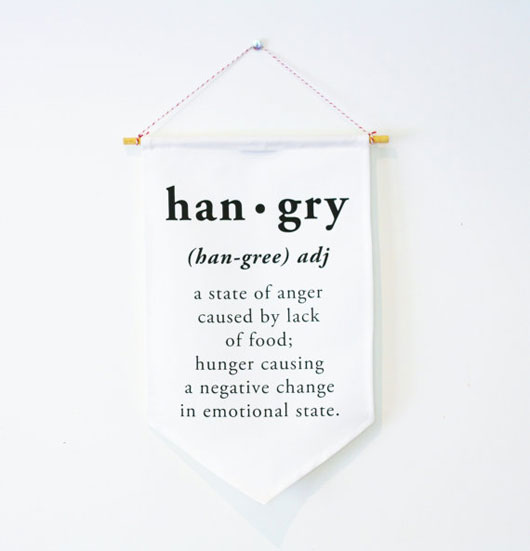









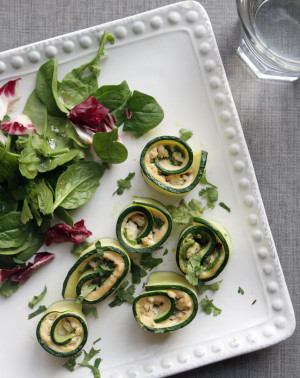
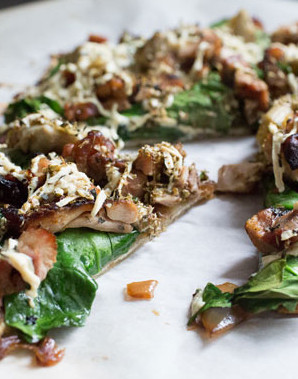
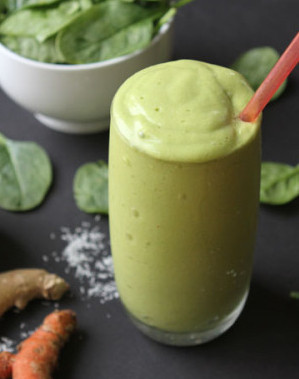
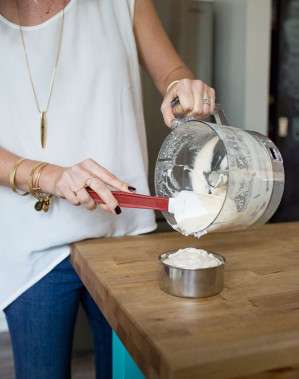
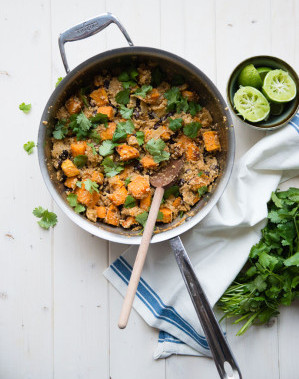
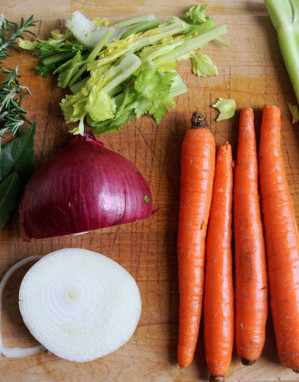
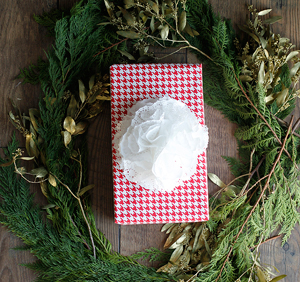


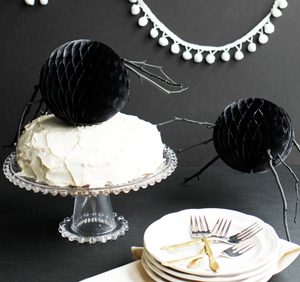

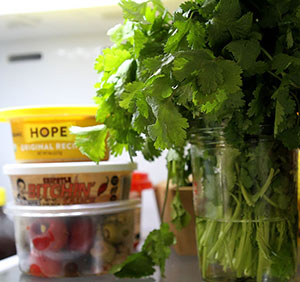











Where do you buy the grass fed butter?
Hi Jessica, you can get the butter at Sprouts or wherever Kerrygold butter is sold…they use milk from grass fed cows
I love having beans on hand! I throw them in so many salads or stuff veggies with them.
i also always have lemon and lime on hand– a squeeze of these guys ALWAYS wake up my meals without added calories or additives. 🙂
Also garlic. copious amounts of garlic and fresh ginger root.
Have you found a brand of almond milk that you milk that doesn’t have a lot of extra junk (like carageenan) in it? I try to make my own and although it’s easy, it’s not super convenient because I go through a lot of it too!
I have been wondering how long to soak my almonds. Will try it tonight. Thanks!